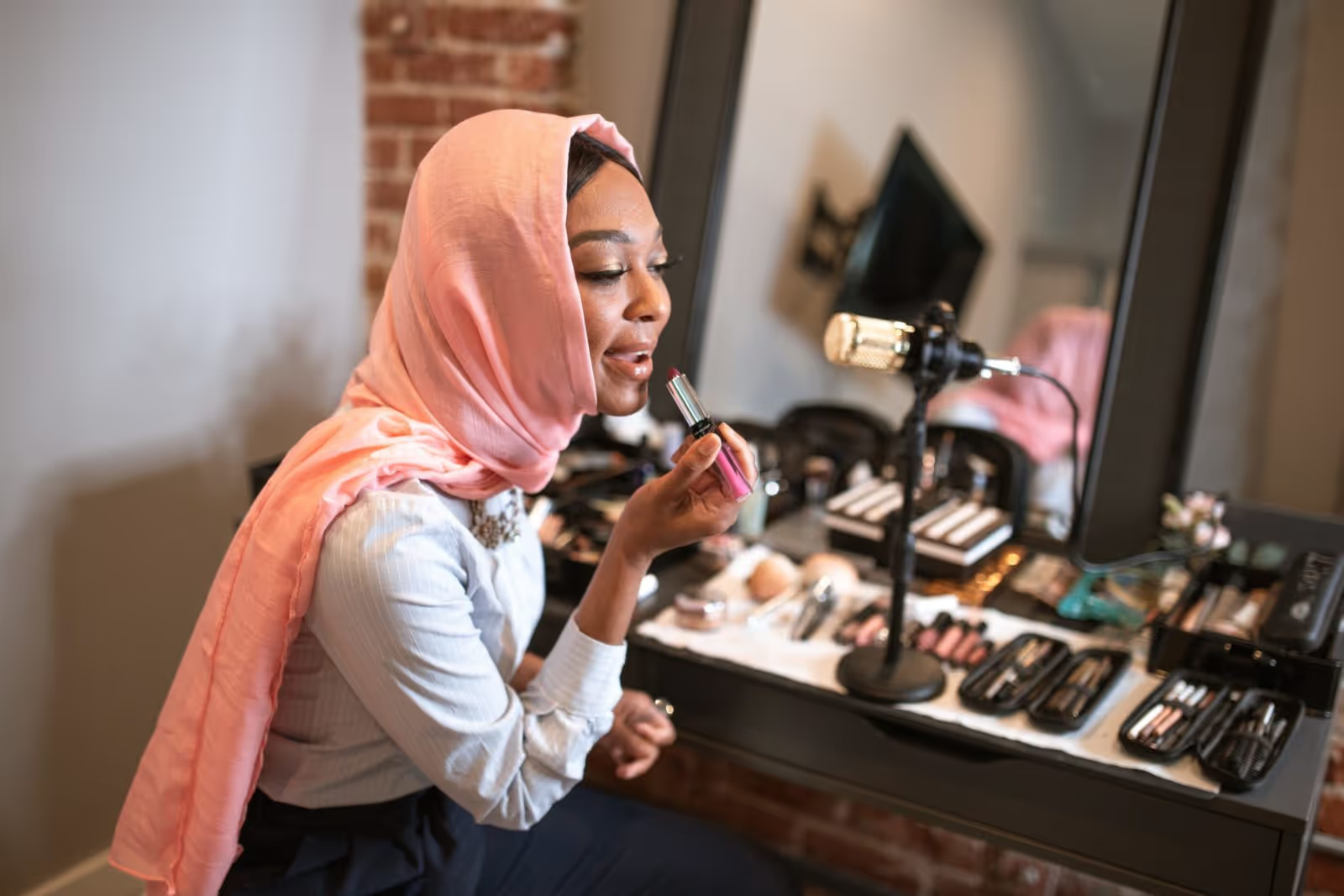Starting your own business is an exciting venture that can transform your life. However, business owners also face several challenges to grow a successful company. For one, many aspiring business owners struggle with how to start a business with little to no money.
Startup costs are a reality for entrepreneurs, especially if you need to invest in physical products, inventory, stores, employees, offices, and other costs to operate. According to the Small Business Administration, the average micro-business (under 10 employees) costs around $3,000 to start. Online businesses cost anywhere between $2,000 and $5,000.
That said, it’s possible to start a business with little money. In this post, we’ll go over how to start a business with $500, $1,000, or less.
What’s the best business to start with no money?
If you’re wondering how to start a business with no money, then look at what you already have—expertise, skills, and knowledge. Time is another investment that you can put towards starting a business when you’re low on startup funds.
For example, online and service-based businesses ranging from coaching to design can have low startup costs and high profits. The biggest investment is your time and expertise.
Not all online businesses are created equally though, and depending on your goals, what works for one person might not work for another.
Below, we’ll break down online business ideas that you can start for cheap. We’ll go over upfront costs, difficulty, and how much you can make from each. (If you’re looking for more inspiration, check out these business ideas for women.)
Best businesses to start with $500 or less
Online businesses cost little to start and can be incredibly lucrative. Here are a few you can start with $500 or less.
1. Become an online coach
Online coaching is great for people who want to work hands-on with their customers. Coaches help people solve problems or improve certain areas of their clients’ lives. As a coach, the biggest investment that you make is your time. If you book one-on-one coaching sessions, you’re limited in the number of clients that you can take on, but you can also charge premium pricing.
Let’s say you host two hourly sessions with each client a month. If you only work with eight people a month (16 hours of coaching), that could easily translate into $5,000 monthly.
How to get started:
- Build a website or landing page for clients to learn about and book your coaching services. You can get started for free with a Teachable account.
- Market your coaching services through social media (Instagram, TikTok, etc.)
- Get coaching clients through referrals and other tactics
- Collect feedback to improve your services and testimonials
Approximate startup costs: $0-$50 to set up your coaching sales page.
What you need: A website or platform for clients to book coaching sessions.
Getting started coaching can be challenging because you need to establish yourself as an authority in your niche. As you build up your reputation though, you’ll gain more traction and can charge higher prices for your time.
2. Sell courses
Ideally, the best business to start with little money will also require less of your time. Online courses are an excellent way to make money online without having to be actively working the whole time.
How to get started:
- Decide on your course idea. It should be a topic you’re an expert in.
- Build a course curriculum (a breakdown of everything you’ll teach). It’s even easier when you use Teachable’s AI curriculum generator.
- Create content to help you teach your course and record course videos if you’re using them.
- Launch your course sales page. Again, you can create and sell an online course for free on Teachable.
Approximate startup costs: $0-50
What you need: Expertise in your course topic, a sales page, and course material
3. Launch digital products
There are many types of digital products to sell online. You could even consider online courses a digital product since it’s something that you sell electronically. It’s not a physical good like a t-shirt or mug.
Many Teachable creators sell digital products as downloads—content and files that someone downloads online. Some examples of digital downloads that you can sell on Teachable include:
- Ebooks
- Templates (social media, website, etc.)
- Music and audio
- Newsletters
- Podcasts
- Reports and guides
- Journals
- Worksheets
- Spreadsheets
How to get started:
- To launch digital products, you’ll need to spend time creating the content. For some products like ebooks and journals, you may also need to design covers and other pages.
- Set up a website and landing pages to sell your products. You can set up digital downloads easily with a Teachable account.
Approximate startup costs: $0-$50
What you need: Content for a digital download and a landing page to collect sales.
Something to keep in mind with these three business ideas is that you don’t have to choose just one. For example, Teachable creator Mallory Rowan offers all three—courses, coaching, and digital downloads. You can easily transfer the knowledge from a course to coaching or a downloadable and vice versa.
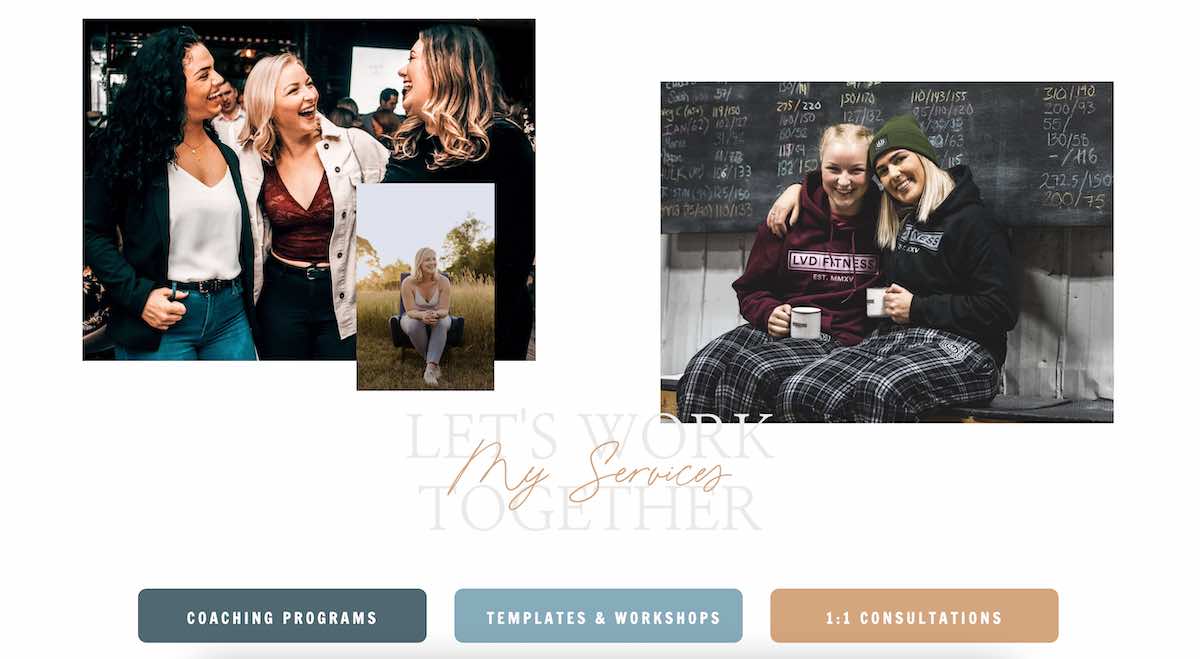
4. Become a freelance writer
If you have a way with words and a wallet crying out for some extra cash, you might want to consider becoming a freelance writer. Freelance writing simply means you write for multiple brands without being tied down to any of them.
The average full-time freelance writer makes $42,000 a year, or $3,500 a month, which is just under the median earning wage for employed adults in the United States.
How to get started:
- You can reach out to publications directly or build a portfolio and wait for customers to come to you.
- You can also sign up for websites like UpWork. However, be aware that there’s a lot of competition there and rates can be low. Still, it’s a great resource for finding clients when you’re getting started.
Approximate startup costs: $0
What you need: A website or portfolio of your writing projects.
5. Start your own design or development agency
Like writing, businesses also need design and development resources. However, many prefer to outsource or freelance them because they may not need help year-round. Instead of hiring in-house designers, they’ll opt to work with an agency.
Often, when a client needs help designing their branding and website, they also need development help to implement it. You can combine both if you have the expertise or focus on one or the other.
You can begin as a freelance designer or developer and get clients through referral or platforms like Upwork and Freelancing Females. Eventually, you may want to register your business as a LLC, or limited liability company. Registering as a business entity like LLC helps protect your personal finances from professional costs. It also impacts your taxes.
How to get started:
- Create a strong portfolio of at least four or five of your best projects.
- If you’re working as a web developer, then specialize in a few programming languages and platforms like Shopify, Squarespace, or WordPress.
- Get your first paying clients and ask them for referrals or testimonials.
Approximate startup costs: $500-$600 for annual costs of Adobe products. Figma and Procreate you can use for free.
What you need: Design tools like Figma, Procreate, Adobe Photoshop, or Illustrator.
6. Create user-generated content
User-generated content (UGC) includes videos, images, or any content that a person rather than a brand creates. Typically, it happens naturally. For example, let’s say you bought a new suitcase. You loved it so much that you shared videos of you packing and traveling with it on social media. That’s an example of UGC.
UGC has been incredibly valuable to brands because people tend to trust content from another person over a company. Around 90% of people say that UGC influences their buying decisions more than any other content, including brand emails and search engine results. Brands also want UGC because it helps them supplement their in-house content creation and can increase conversions by 8.5% or more.
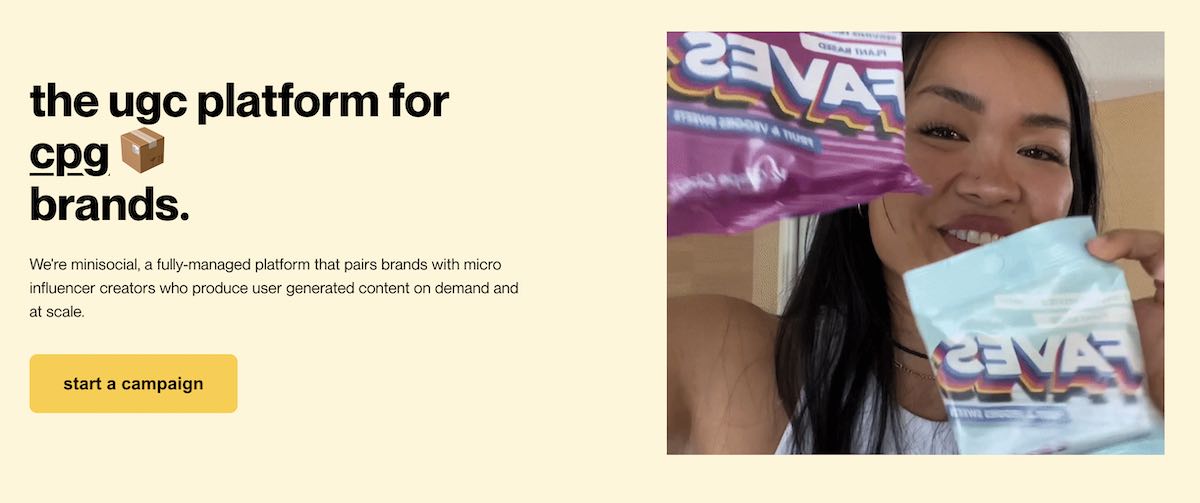
The best part about UGC is that you don’t need a huge following or to be an influencer to get started.
How to get started:
- Identify brands that you use and would like to review for UGC.
- Sign up for UGC and creator marketing platforms like #paid, minisocial, and Billo.
- Create videos, images, and other content for brands.
Approximate startup costs: $0
What you need: Your phone to record videos and some editing tools.
7. Start a YouTube channel
YouTube isn’t for everyone, but if you’re interested in being in front of the camera, you could turn it into a source of revenue.
To make money from YouTube, you’ll need to build your audience until you get your first 1,000 subscribers. Then, sign up for YouTube’s Partner Program (YPP). You need at least 1,000 to sign up for YPP, which is how YouTubers make money from ads. However, YouTube recently announced that it’s lowering the eligibility to 500 subscribers.
The key to being successful on YouTube is to be consistent and create high-quality content. Even the people who seem to have been overnight successes usually have been working at it for months and finally have a video go viral.
Unlike with online courses, you probably can’t get away with just filming on your webcam. But, a high-quality cell phone camera can make the cut.
How to get started:
- First, you’ll need to start a YouTube channel. Obviously, you’ll need to sign up for a free YouTube account if you don’t already have one. (For more guidance, we have a full guide on how to start a YouTube channel.)
- Plan a content calendar and record at least five videos to start. You should post consistently at least once a week if not daily.
- Analyze your video content to understand what formats and topics your audience engages with the most. Then, use those learnings to plan future content.
- Sign up for the YPP once you meet the eligibility requirements to get money from ad revenue.
- Supplement ad revenue by getting brand sponsorships for your YouTube channel or doing affiliate marketing.
Approximate startup costs: $0-$500
What you need: Video equipment (cameras, editing software, lighting, etc.)
8. Do affiliate marketing
With affiliate marketing, you recommend products and services to your audience and make a percentage of each sale that’s made through your affiliate tracking links. How much you make varies depending on the brand you’re working with, and your audience size.
For most creators, affiliate marketing is a side hustle. However, you can make a full-time income from it if you have a large enough audience that’s also engaged.
It can be a good fit for those that already have over 10,000 subscribers on YouTube or other social media or bloggers that have around 10,000 page views monthly. Of course, you can get started with affiliate marketing before you hit these milestones. But, you’ll likely make more money once you have a larger audience size.
How to get started:
- Build an active audience on your blog or social media.
- Sign up for affiliate marketing programs like Amazon Associates, ShareASale, PartnerStack, and others.
- Research brands directly to find out if they have an affiliate program and what the commission is for affiliates.
- Create content and include affiliate links when it makes sense.
Approximate startup costs: $0-$50
What you need: An engaged audience, a blog or social media presence, and affiliate tracking links.
Best businesses to start with $1,000
If you have some money saved, there are businesses that you can start for relatively cheap.
9. Test dropshipping
Selling physical products can get very expensive. As a business owner, you would have to invest in developing a product and buying items in bulk with no guarantee they’ll sell. Not to mention, if you store the inventory, then you’re also on the hook for packing and shipping it.
One way to sell products without incurring the costs and risks associated with them is to start a dropshipping business.
With dropshipping, you don’t store any of the products but work with a third-party wholesaler. You’re responsible for getting the orders, but they store and ship products on your behalf.
Like most businesses, you should still find your niche. For example, if you’re passionate about fitness and weightlifting, you might sell products like workout apparel, home gym equipment, or protein powder.
How to get started:
- Identify your niche and ideas for best-selling products
- Research reputable dropshipping suppliers with platforms like Spocket, Salehoo, or Alibaba.
- Create an e-commerce website on platforms like Shopify or Wix.
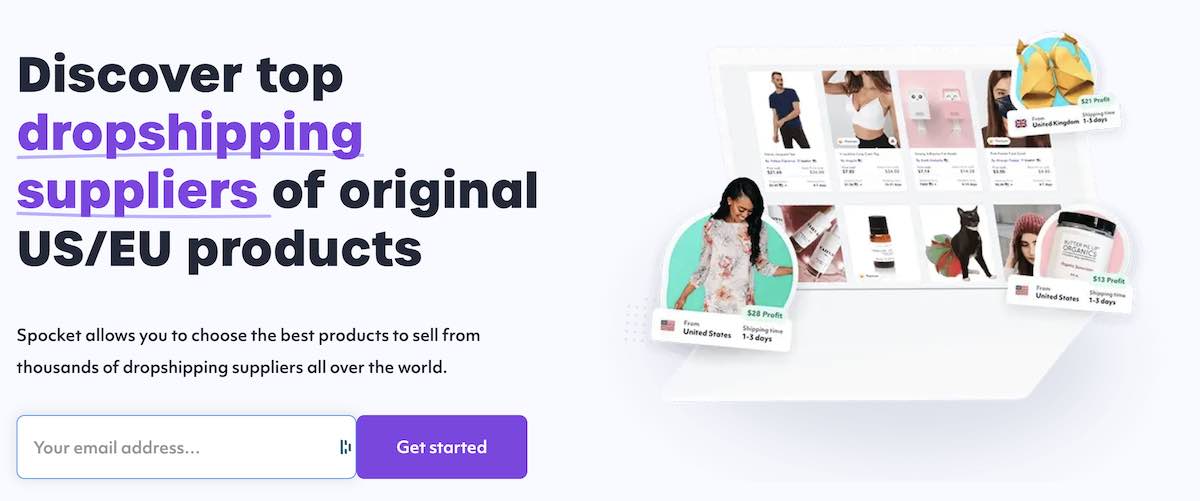
Approximate startup costs: $500-$1,000
What you need: A website and a dropshipping supplier. You may also need to invest in marketing to get your products in front of potential customers. Since you’re selling physical products, you should also register your business.
If you really bootstrap and build your website on your own, you could start for less than $1,000. However, if you don’t have web design or development experience, it’s best to budget for startup costs. You might also want to budget for ordering samples of your products before you sell them.
10. Sell print-on-demand shirts, stickers, and other products
If you have design skills, you can make money by selling products that feature your designs. Like dropshipping, print-on-demand business models make it easier to start a business without investing a lot of money.
Instead of making products without knowing whether customers will buy them, you can create them when you get orders.
Sites like Printful or Printify will print, pack, and ship products to your customers.

Print-on-demand companies don’t always charge an upfront fee for their services but usually take a percentage of shipping costs and other fees. So, you’ll want to review their pricing models and compare to find the right arrangement for your business.
How to get started:
- Build a website to sell your physical products (Shopify, Squarespace, etc.). You can also create an online shop for physical products with Etsy, but it will take a larger percentage of your sales.
- Create five to ten designs to use on various products like t-shirts, sweaters, cups, stickers, hats, tote bags, and more.
- Identify a print-on-demand company to produce and ship your products.
Approximate startup costs: $500-$1,000
What you need: Designs, a website, and a print-on-demand supplier.
11. Sell handcrafted and upcycled goods
Another option for selling physical products at a low-cost is to focus on handcrafted or upcycled goods. For example, if you know how to crochet or sew, you could create items without needing to invest money in or work with a supplier. Although, it will take some time to create items and you’ll need supplies and equipment to get started.
The cost of starting a business selling handmade items will depend on what you make. Another option is to buy secondhand furniture and other items at a low price, upcycle them, and sell them for a higher price.
Both options can require slightly less than developing a mass-produced product that might require expensive equipment and suppliers. However, it will take more time to source secondhand items and create handmade items.
How to get started:
- Build a website or Etsy shop to sell your handmade products.
- Find secondhand items to upcycle or identify and create handmade items that align with your niche.
- Market your products online or go to local markets.
Approximate startup costs: $1,000 or more
What you need: Supplies to make or upcycle and money to purchase furniture and other products to upcycle.
Unlike the other businesses on this list, you’ll have some inventory. Although it’s less than you would if you were mass-producing items, you’ll still need to store, pack, and ship your items.
How can you start a business with no money?
You don’t need a lot of money to start a business, although it can help. When you’re low on startup cash, there are other investments that you can make to get your business off the ground.
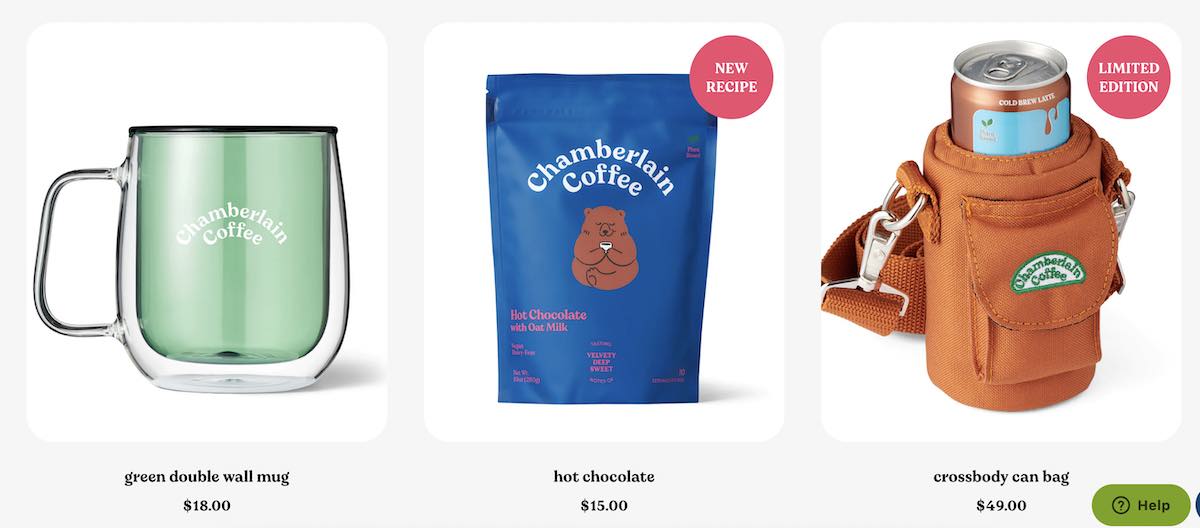
- Community or influence: It’s free to set up an account on social media and grow your audience. Many influencers like Emma Chamberlain start by building a community first, and then they build a business later. Because they already have a captive audience that trusts them, it’s easier to sell products to start.
- Authority: When you have authority, people trust and seek out your expertise. One way to build authority is to get testimonials from customers or get featured in press and media publications like Forbes, Bustle, and others.
- Time: Most startup costs for an online business are around getting your website up and running. If you have the skills and the time to design and develop your own or use a no-code solution, you can save on some costs. Eventually, as your business grows, it could make more sense to outsource tasks like bookkeeping and content management. While you, as the business owner, focus on other tasks.
What do you need to start a business?
Let’s break down how to start a business and make money—specifically the foundation you need to establish to get started.
To start a business, there are some tips that can help you set up shop, including:
1. Conduct market research
Is there an audience interested in your business and are they motivated to buy at your price point? One starting place is to look at research tools like Exploding Topics. You can discover products and topics that are trending and how many people search for them each month to gauge demand.

2. Brainstorm a business name
A relevant and recognizable name can help potential customers easily understand your business and remember it. Come up with a list of short, catchy keywords that help describe your business. Then, check if those are available as a website domain and on social channels.
You may also want to search the United States Patent and Trademark Office (USPTO) database to see if a name is taken.
3. Plan your business costs, pricing, and other finances
If you’re taking out a small business loan, then you’ll need a detailed business plan. However, for a low-cost business that you’re bootstrapping, you don’t necessarily need one.
That doesn’t mean you shouldn’t plan out some key elements like your product pricing and expenses. At least, calculate the income you need to make to cover all your expenses and then some. Then, set your pricing to align with your financial goals and market.
4. Register your business entity
Registering your business makes it official, and helps you legally protect yourself from legal issues. You’ll also need to register your company to set up a business bank account, get insurance, and hire employees. Some suppliers may also require you to have a registered business.
In most cases, you’ll start by registering your business name on a state level. For taxes, you’ll also need to get a federal tax ID.
When you register your business, you’ll need to choose the structure. Most small businesses opt for (limited liability companies) LLCs. Freelancers are often considered sole proprietors since they don’t have other employees.
5. Develop your branding, logo, and website
To get started, you don’t need an expensive logo or brand design. However, it can help your brand look more professional and gain the attention and trust of new customers.
If you have $2,000 to $5,000 to invest in design, you can hire a graphic designer to build out a logo, brand colors, font, and even a website. Of course, the cost depends on the person and their experience. Spending a little extra might save you money in the long run by hiring someone that’s cheaper but doesn’t deliver what you want.
Start your business online today
Teachable makes starting a business and handling transactions easier. You can create a beautiful sales page without having to fuss with a lot of technical know-how. With a Teachable account, you can create and sell everything from digital downloads like ebooks and journals to online courses and coaching services.
We have the tools, but you have the skills. Our free plan is the perfect place to start flexing those skills. Sign up today to share what you know (no credit card needed).
FAQs
What business can I start under $500?
Businesses that you can start under $500 include freelancing, coaching, courses, and digital products. They tend to have few startup costs because you’re selling a service or your expertise. You don’t need to buy and store physical products, hire employees, or lease an office or store.
What is the easiest business to start?
There are pros and cons to different online businesses, and it really depends on your strengths and preferences. The top three ways to earn money online with a minimal investment are: selling your own online products or services, building an audience on YouTube, and developing an online coaching business.
{{coursecurriculum-component="/blog-shortcodes/blog-popup"}}
Join more than 150,000 creators who use Teachable to make a real impact and earn a real income.
